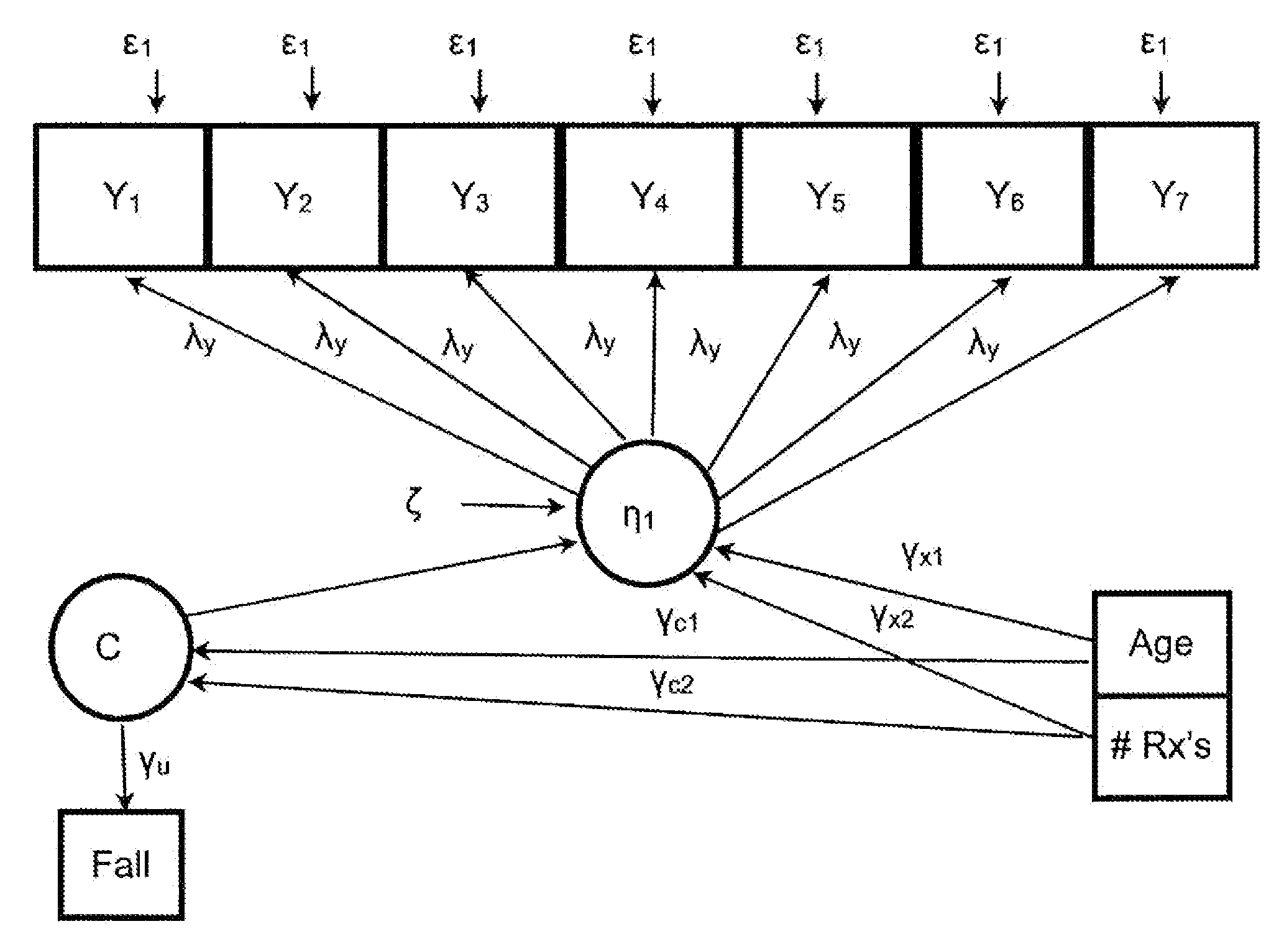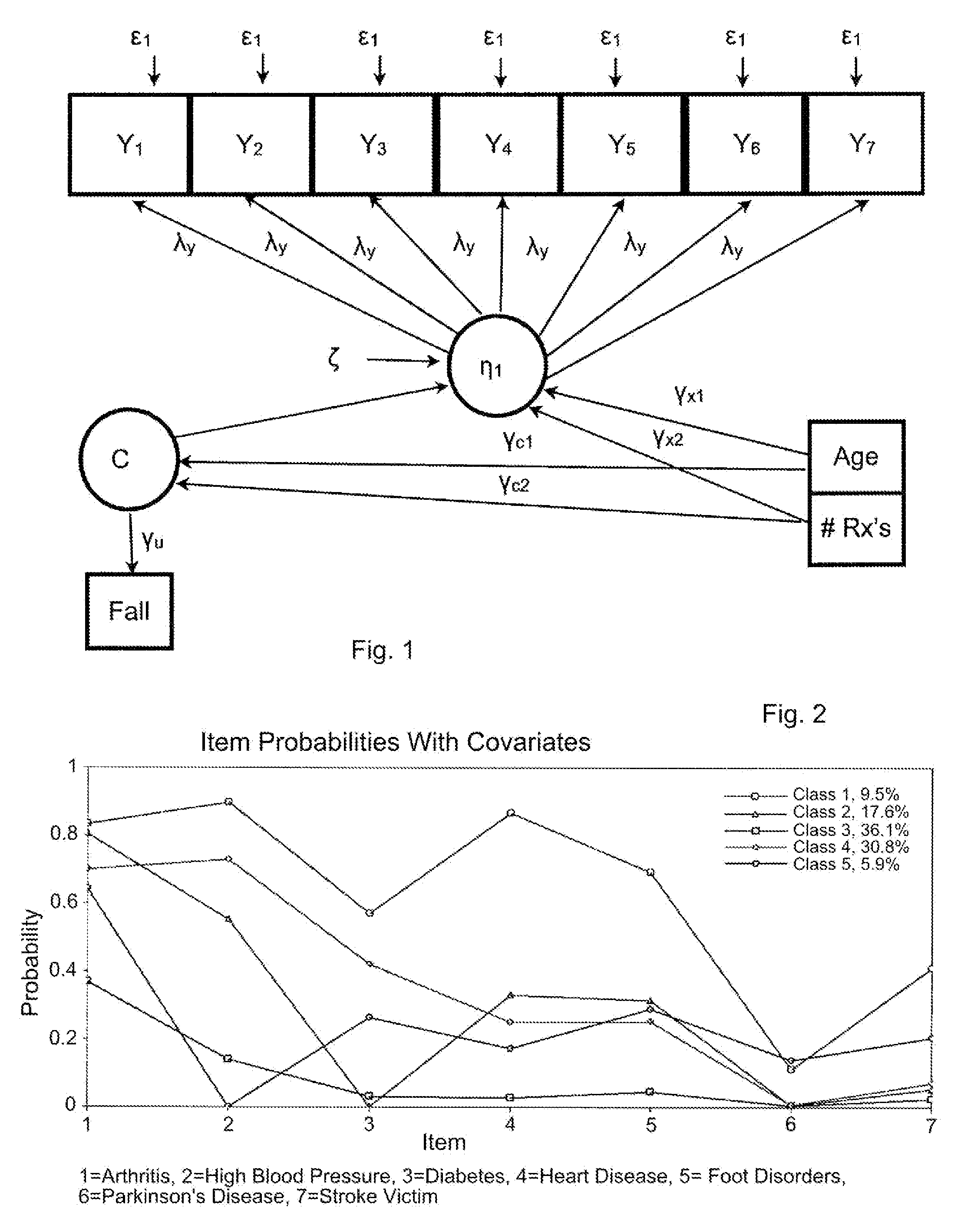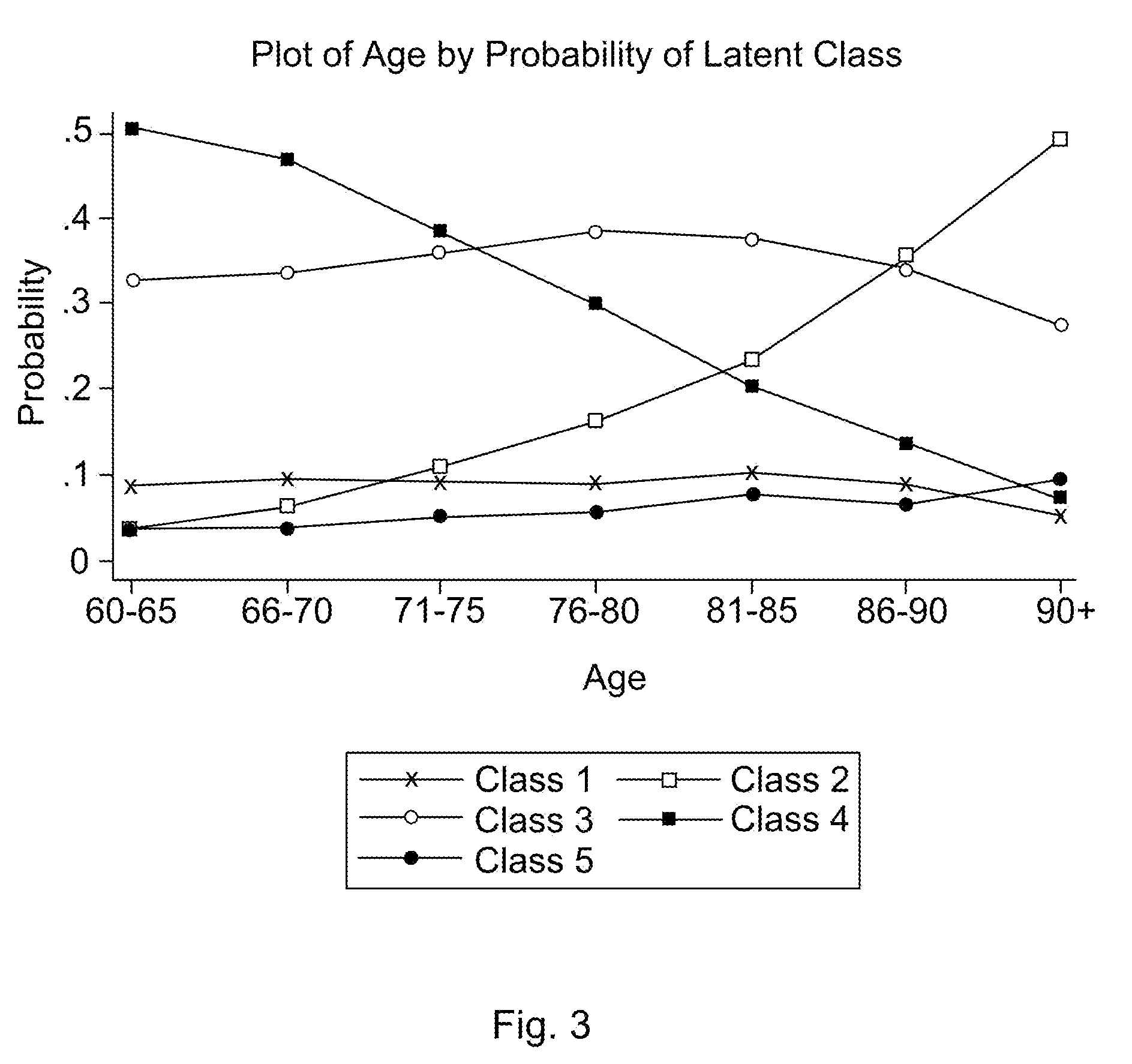Statistical model for predicting falling in humans
a statistical model and human technology, applied in the field of statistics, can solve problems such as injuries deaths among peopl
- Summary
- Abstract
- Description
- Claims
- Application Information
AI Technical Summary
Benefits of technology
Problems solved by technology
Method used
Image
Examples
example
[0074]A data set consisting of 3,293 elderly patients is analyzed. Seventy-four percent of the subjects had not fallen while 26 percent had fallen in the last 30 days. Descriptive statistics for the data set are as follows:
TABLE 1Descriptive StatisticsNo FallFallAgeMean ± SD77.47 ± 6.91 77.98 ± 7.41 MedicationsMean ± SD2.30 ± 5.575.10 ± 10.10GenderMale27%22%Female73%78%ArthritisPercent69.8730.13HBPPercent71.5828.42DiabetesPercent66.1433.86Heart DiseasePercent66.7133.29Foot DisorderPercent65.2734.73ParkinsonsPercent58.6741.33DiseaseStrokePercent62.1637.84
[0075]Falling is defined as “an event which results in the person coming to rest inadvertently on the ground or other lower level, and other than as a consequence of sustaining a violent blow.”
[0076]With reference to Table 2, below, an initial review of the model fit indices, with no covariates, indicated a five-class solution to be advantageous. More particularly, the posterior probability of membership in latent class t, given resp...
PUM
 Login to View More
Login to View More Abstract
Description
Claims
Application Information
 Login to View More
Login to View More - R&D
- Intellectual Property
- Life Sciences
- Materials
- Tech Scout
- Unparalleled Data Quality
- Higher Quality Content
- 60% Fewer Hallucinations
Browse by: Latest US Patents, China's latest patents, Technical Efficacy Thesaurus, Application Domain, Technology Topic, Popular Technical Reports.
© 2025 PatSnap. All rights reserved.Legal|Privacy policy|Modern Slavery Act Transparency Statement|Sitemap|About US| Contact US: help@patsnap.com



